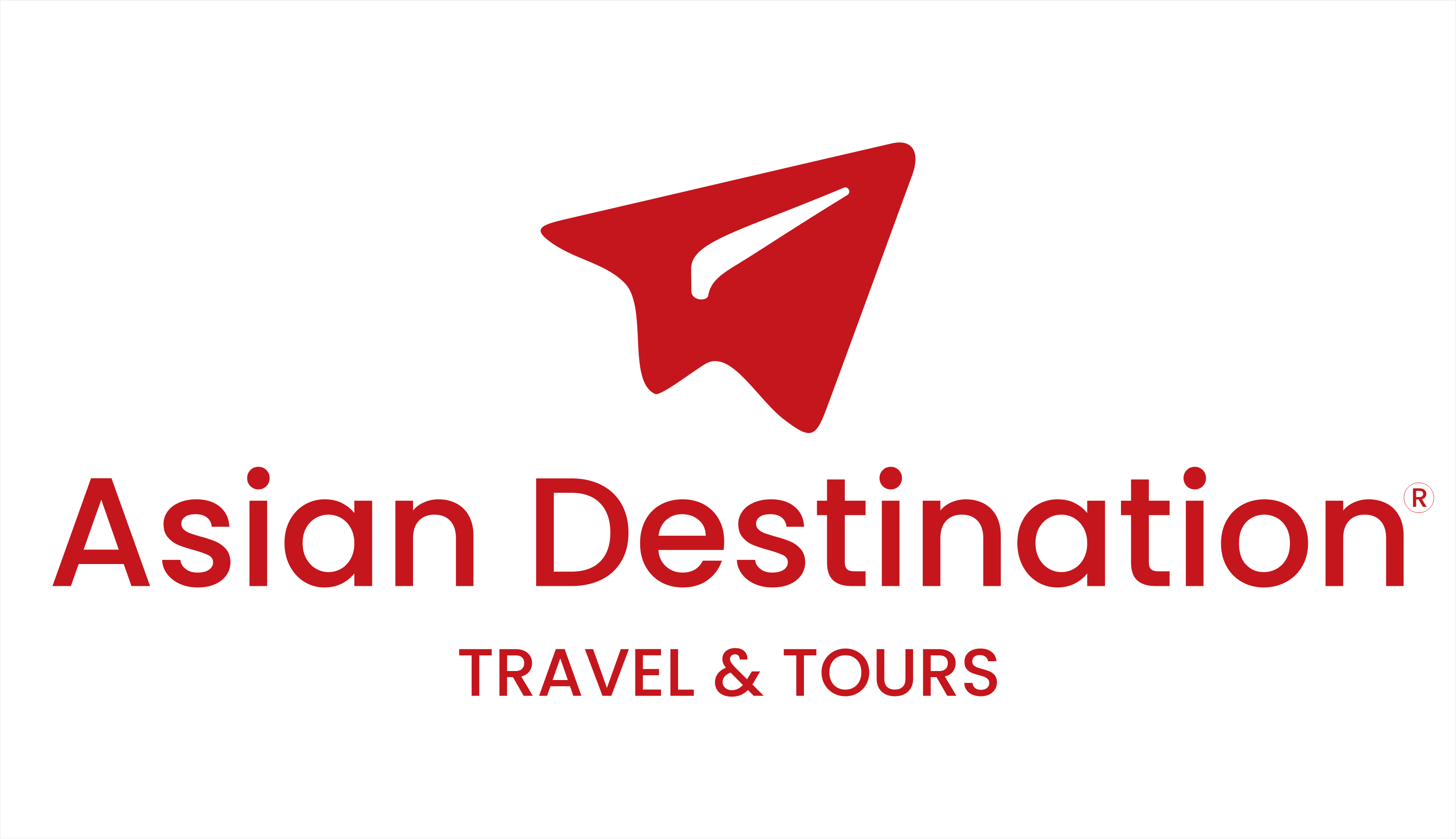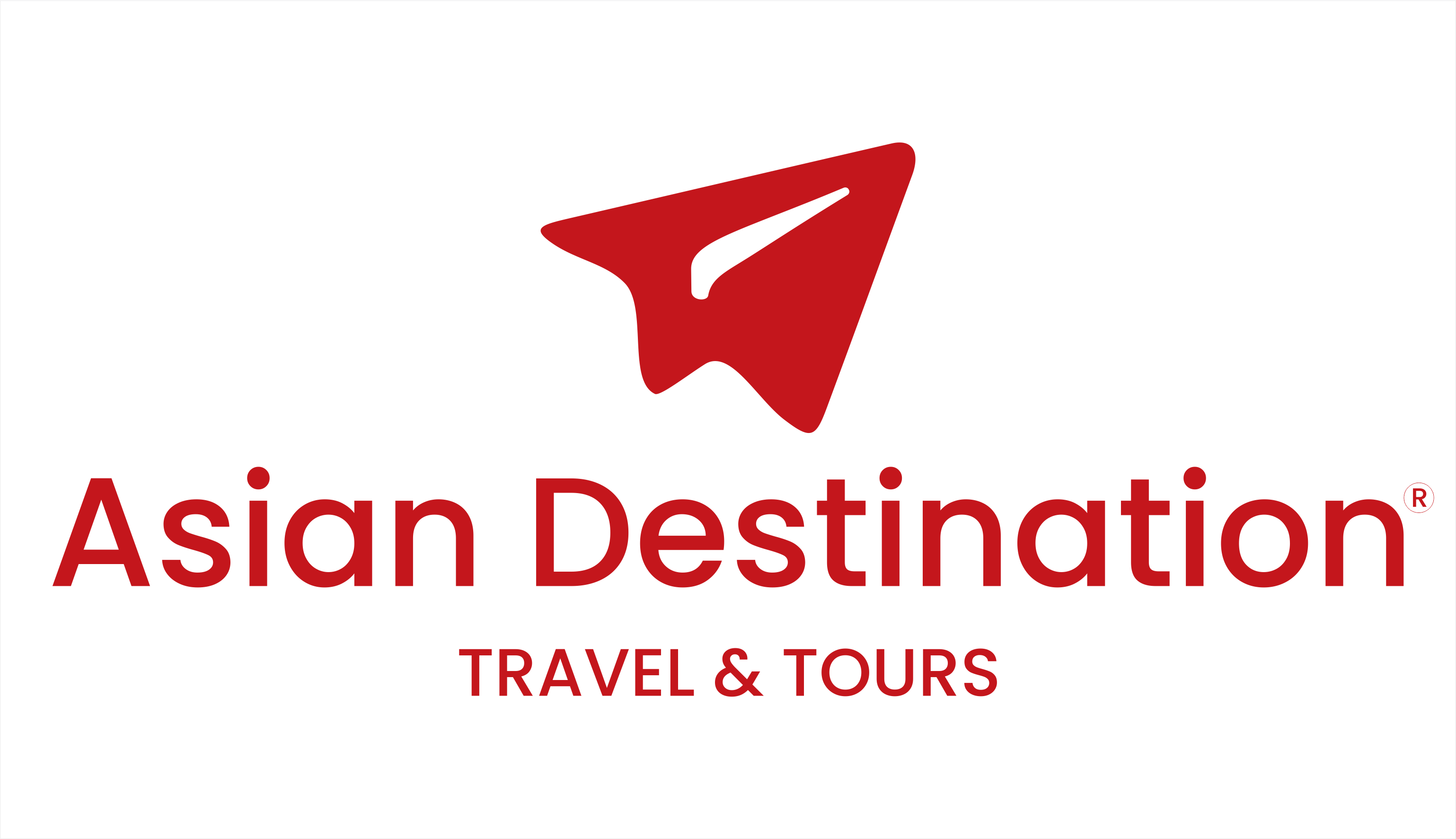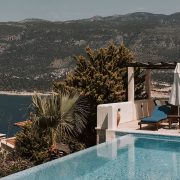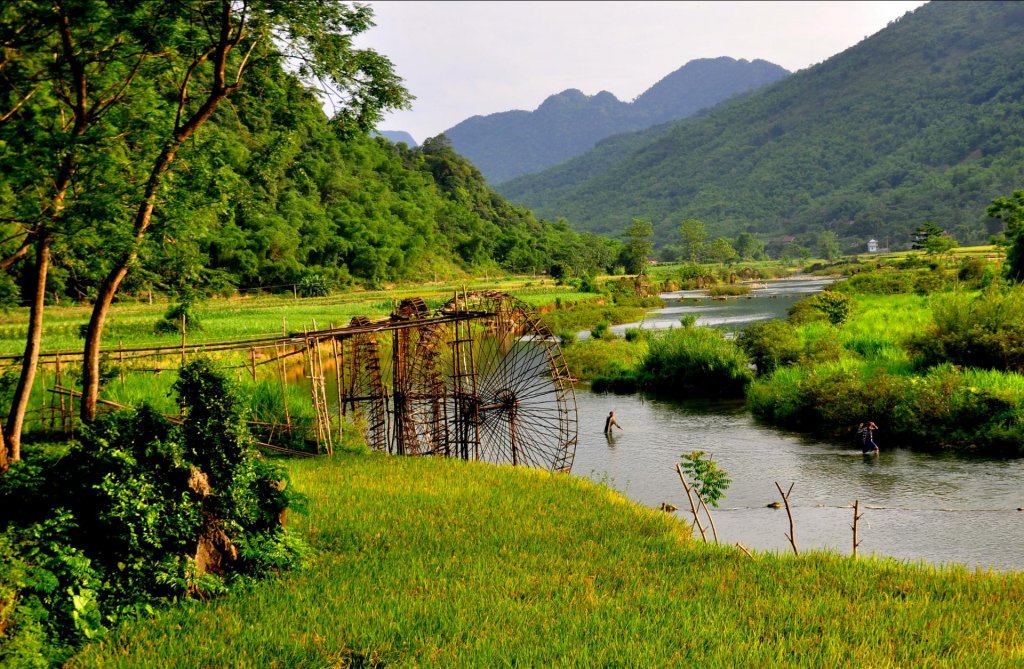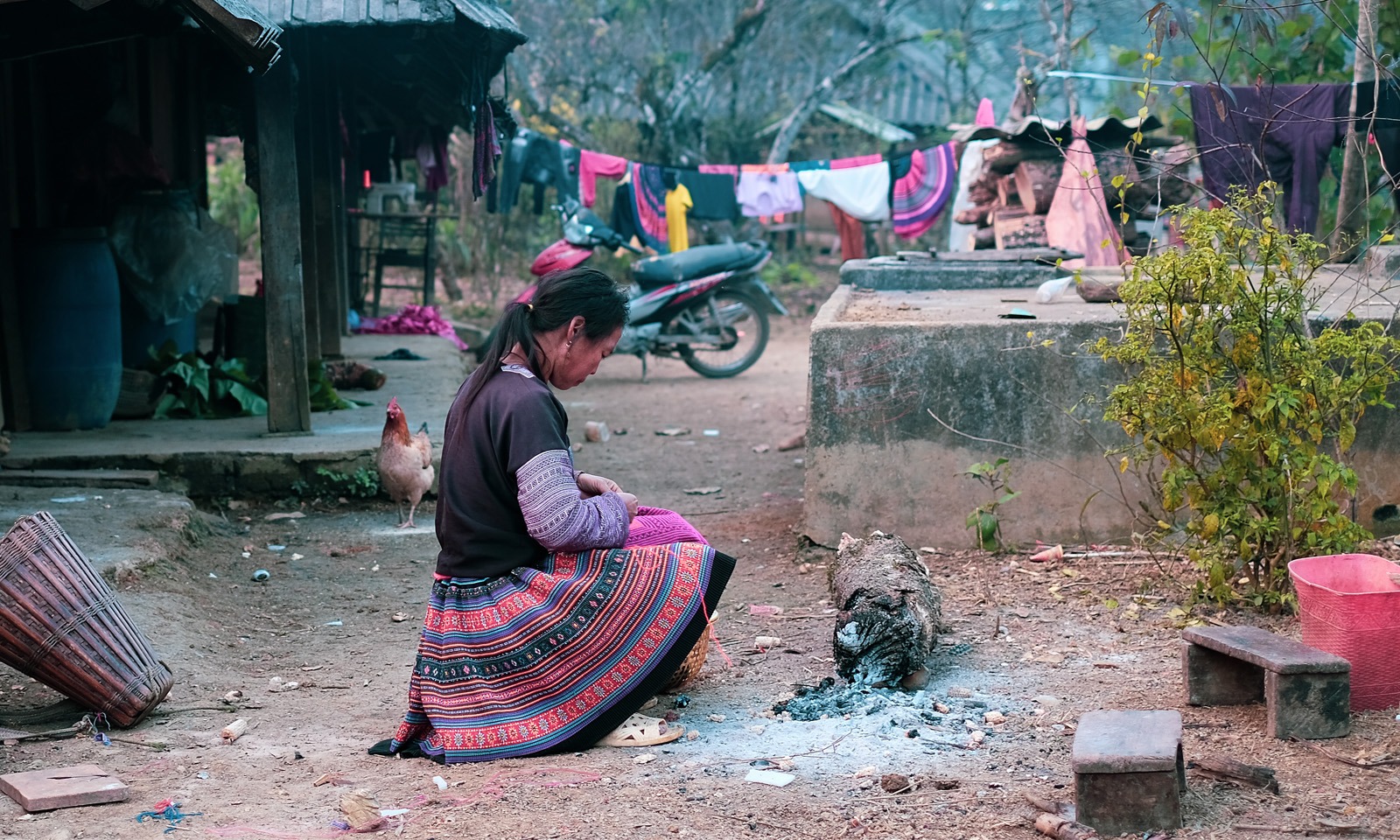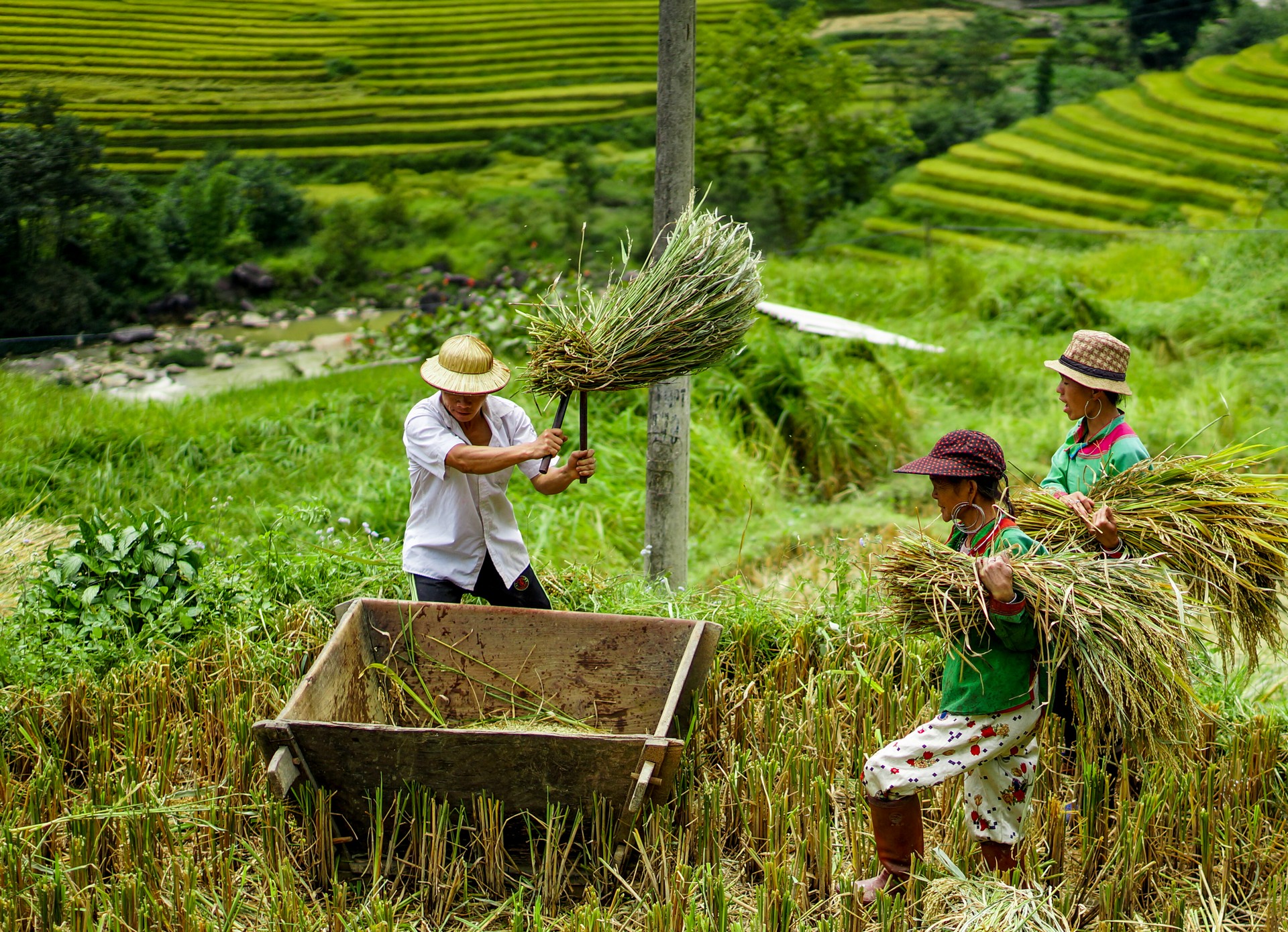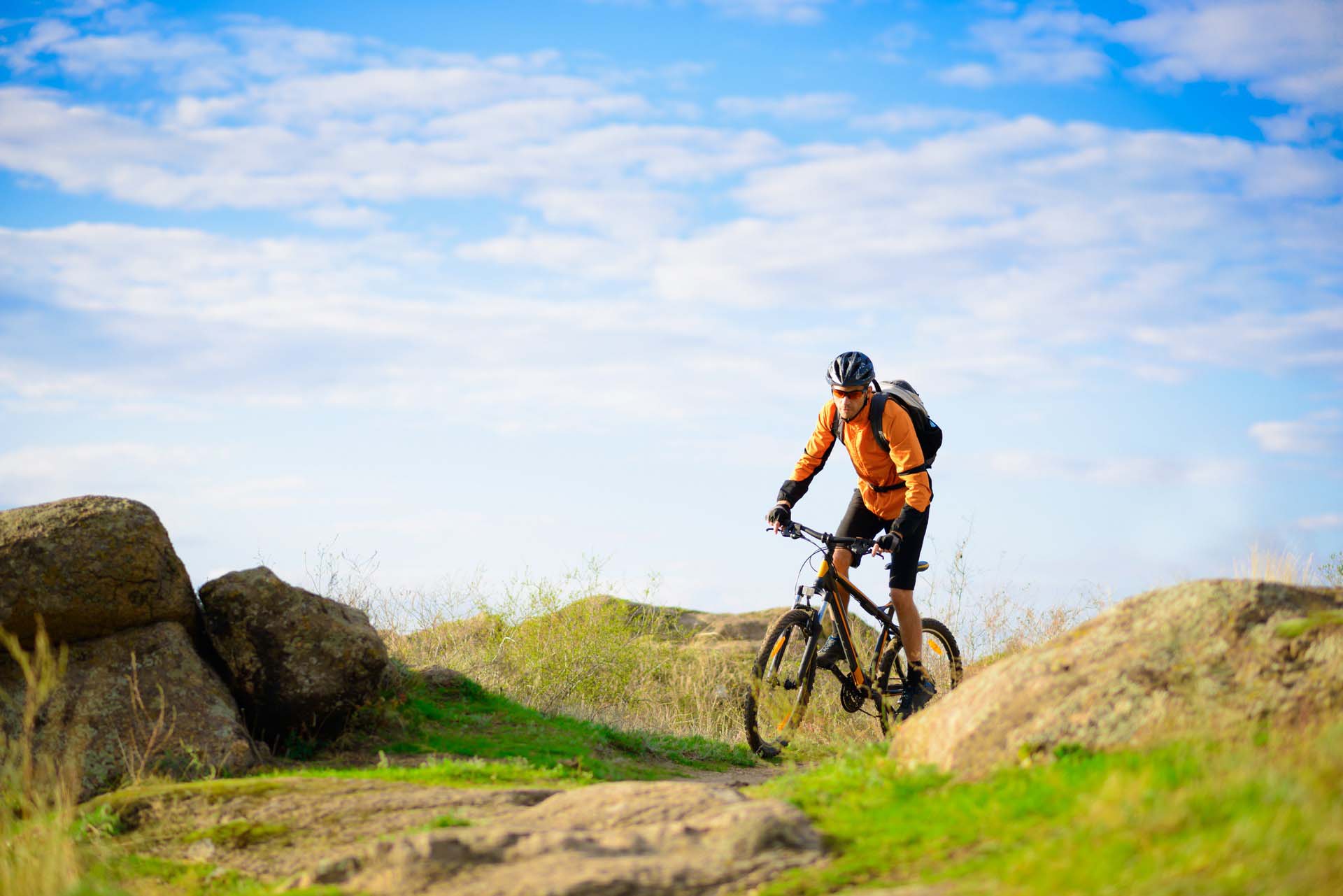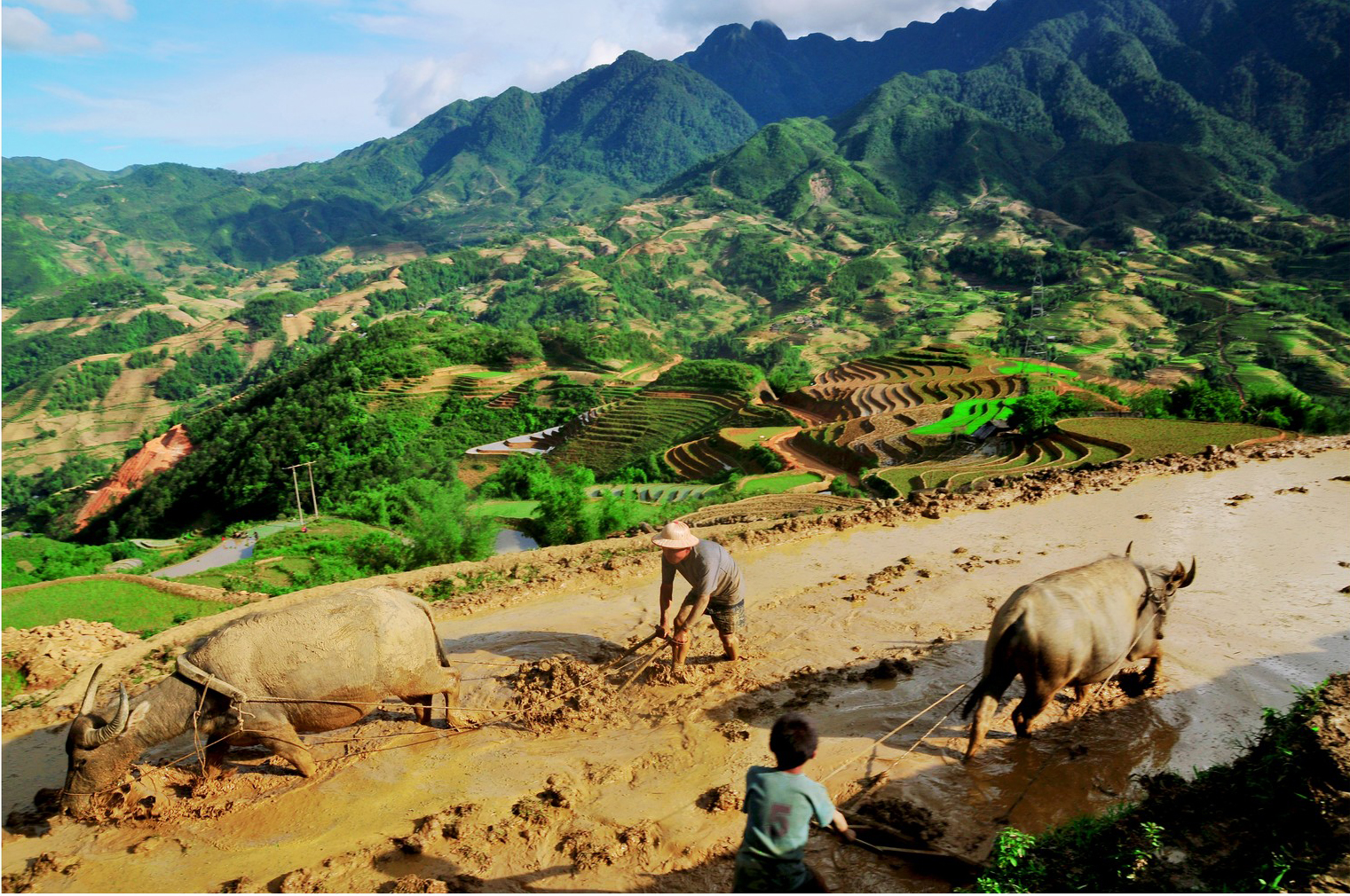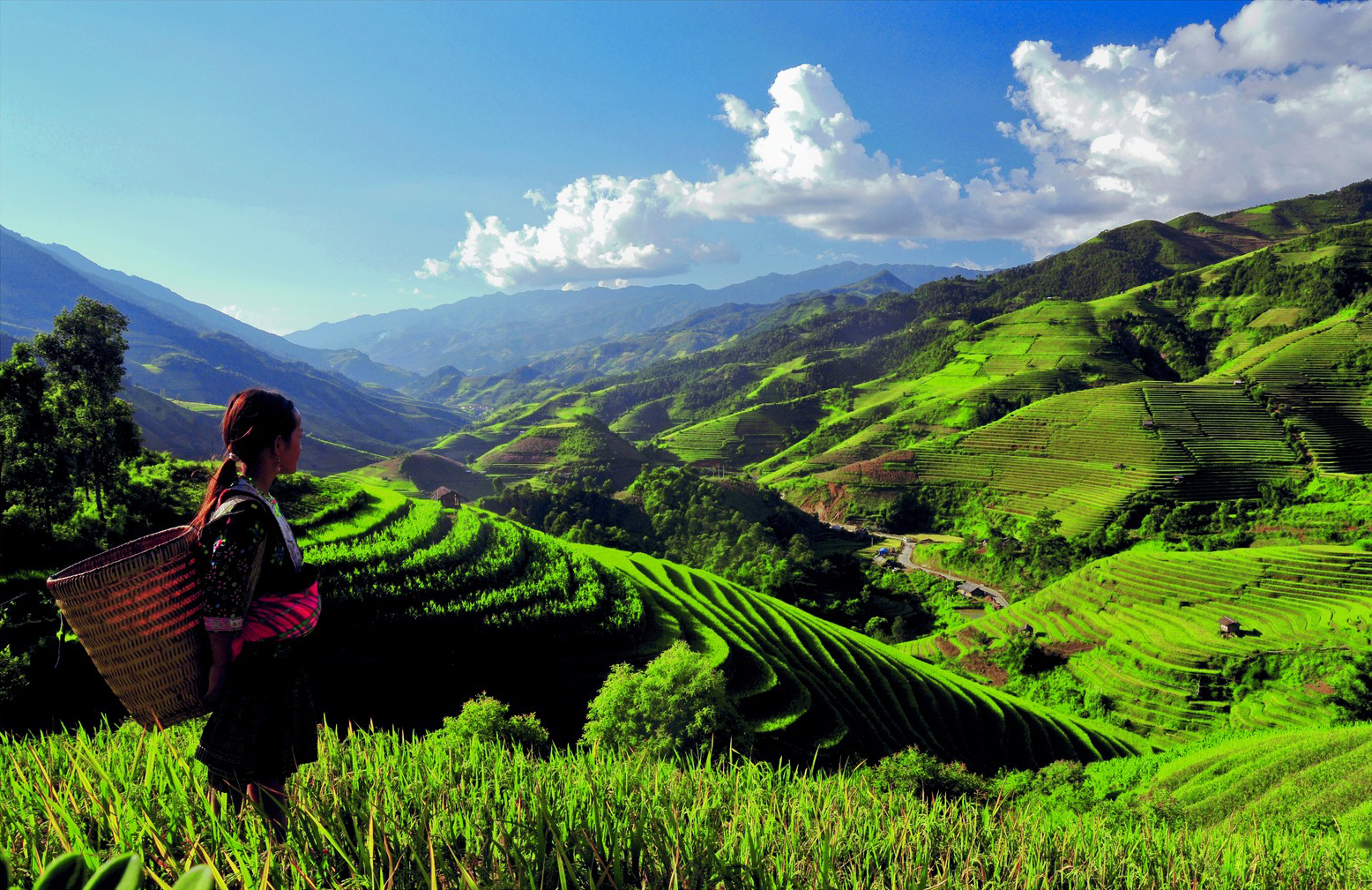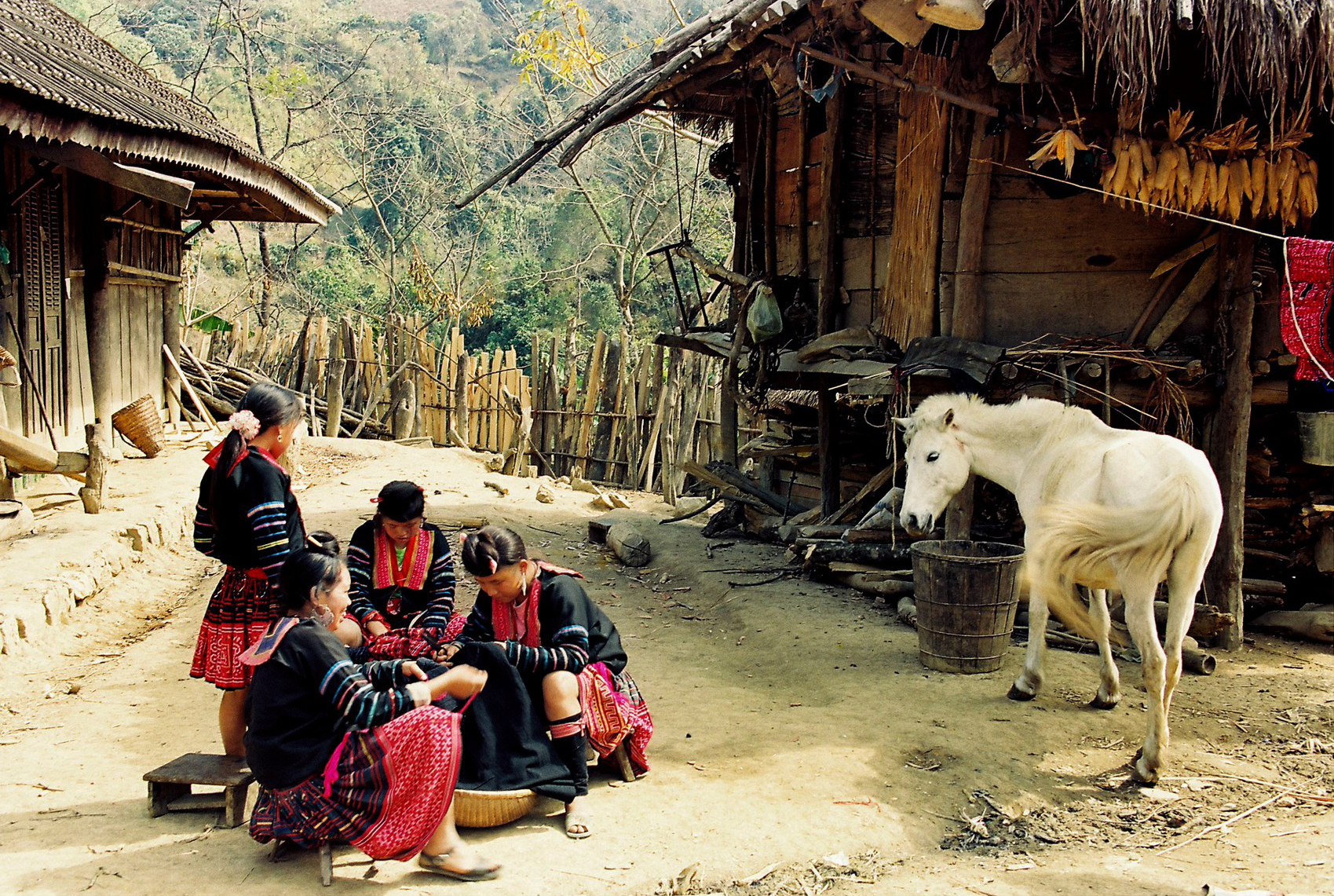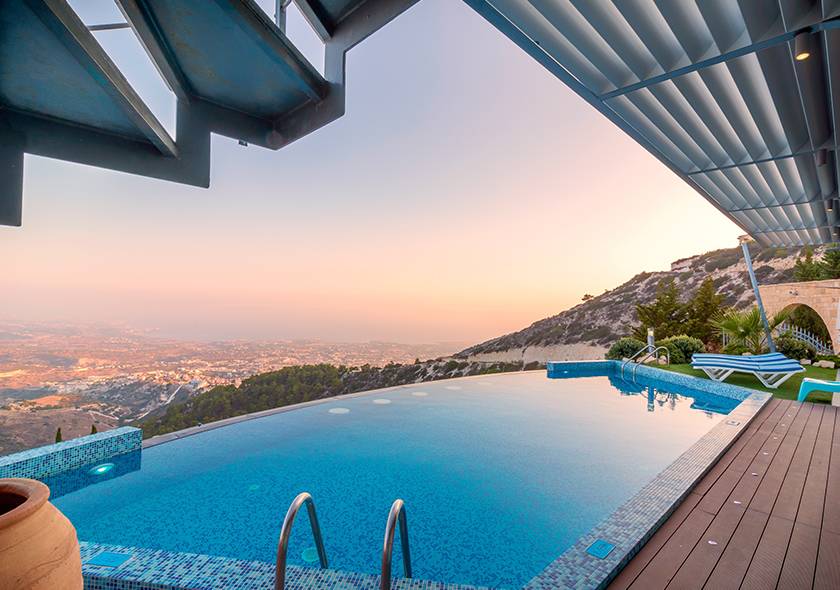Cambodia FAQs
- Home
- Cambodia FAQs
FAQs
Figuring out the best time to travel Cambodia depends on what you plan to do when you arrive. Cambodia is warm all year round, but it has a rainy season too.
If you visit Cambodia between March and May, the temperatures and humidity are higher. Visiting at this time can still be a good choice if you are hitting the coast. If you are travelling Cambodia to explore the temples, the season between November to April is cool enough for sightseeing. December and January can be the most popular time for tourists.
Travel Cambodia in the rainy season, and you’ll find the countryside at its lushest. Travelling around Cambodia during this season can present some practical challenges and flooding is commonplace. However, the mornings are usually dry as the rain mainly falls in the afternoon. If you do choose to go visit in the rainy season, you’ll avoid the crowds too.
The busiest International Airports are Phnom Penh and Siem Reap. There aren’t any direct flights from Europe to Cambodia. You can reach Phnom Penh, and Siem Reap via Hong Kong, Singapore, Bangkok, Kuala Lumpur, Ho Chi Minh City and several other destinations.
It’s also possible to travel overland into Cambodia from neighbouring countries. You can cross the border at several spots in Thailand, Vietnam and Laos.
When planning how to travel around Cambodia, consider the transport as part of the adventure.
Roads have seen massive improvements in the past five years, so getting around the country is much easier than it once was. The bus system provides connections between all major towns. The bus offers the cheapest and usually the most convenient way to travel.
Minibuses and ‘share taxis’ are also other options to travel by road. Share taxis are faster than taking the bus, but they do get absurdly packed. You can ask to pay roughly double the standard fare to have a front seat to yourself. You could also pay to hire the entire taxi.
For short local trips, you can hire a motorcycle or ‘moto’ for the day or a tuk-tuk. A tuk-tuk is a passenger carriage pulled by a motorbike. It’s virtually impossible to rent a self-drive car in Cambodia, but you can hire a car with a driver. Three-wheeled cycle rickshaws called cyclos are also available in Phnom Penh for short trips.
You may also end up travelling Cambodia by boat. Boat trips run between Phnom Penh and Siem Reap, and between Siem Reap and Battambang. In the south, regular ferries and fast catamarans run between Sihanoukville and Koh Rong.
Cambodia is one of the cheapest Asian countries to visit, and although prices are starting to creep up, the country still offers outstanding value.
Good budget rooms are available for around $7 in most parts of the country (slightly more in Phnom Penh and Siem Reap). Eating is also cheap. A meal at a local market or Khmer restaurant can be had for $2 or even less, while main courses in tourist restaurants start from as little as $2 (although upscale places can cost considerably more). A small bottle of mineral water costs just 1000 riel, while draught beer usually sells for $1 a glass. Transport is similarly inexpensive – $1 per hour of travel suffices as a rough rule of thumb, although you’ll pay a bit more on certain routes or when travelling with more upmarket bus companies. Entrance fees are also generally modest – tickets to visit the temples at Angkor are excellent value, although a few museums and other sights are disproportionately expensive.
Transport and tours are the two things most likely to blow your budget. Hiring a car and driver to explore remote temples like Banteay Chhmar, Koh Ker, Preah Khan (Kompong Thom) and Preah Vihear can easily set you back something in the region of $60–100 per day. Tours are also pricey. Visiting the temples of Angkor by tuk-tuk is relatively inexpensive, but more unusual tours – personalized itineraries around the Mekong Trail, trekking in Rattanakiri, birdwatching and boat trips, quad-biking, horseriding, and so on – will generally set you back at least $60 a day, and often much more.
All of which means that staying in budget guesthouses, eating at local restaurants and markets and travelling on public transport you could conceivably get by on as little as $10 per person a day if travelling in a couple and cutting out all extras. Eating in tourist restaurants, indulging in a few beers and taking the occasional tour by tuk-tuk will push this up to $15–20 a day. For $50 a day you can live comfortably, staying in nice hotels and eating well, while $100 a day allows you to stay in luxurious accommodation – although it’s also possible to spend a lot more than this.
A sales tax (comprising a ten percent government tax and ten percent service) is often charged in mid-range hotels. Always check in advance. Tax is also sometimes added to food at restaurants – in which case this should be clearly stated on the menu.
Despite its turbulent recent history, Cambodia is now a generally safe country in which to travel. It’s important to be mindful, however, of the fact that Cambodia is one of the most heavily mined countries in the world, and also has significant quantities of unexploded ordnance (UXO) lying around. In the countryside you must stick to well-trodden paths.
Currency
Cambodia uses a dual-currency system, with local currency, the riel, used alongside (and interchangeably with) the US dollar, converted at the rate of 4000 riel to US$1 (an exchange rate which has remained stable for several years now). Riel notes (there are no riel coins, nor is US coinage used in Cambodia) are available in denominations of 100, 500, 1000, 2000, 5000, 10,000, 20,000, 50,000 and 100,000. You can pay for most things – and will receive change – either in dollars, in riel, or even in a mixture of the two; there’s no need to change dollars into riel. Larger sums are usually quoted in dollars and smaller amounts in riel (although sometimes, as in menus, prices are quoted in both currencies).
Things get a bit more confused near the Thai border, where Thai baht are generally preferred to riel, or at Bavet, the Vietnamese border crossing, where you may be quoted prices in Vietnamese dong. If you don’t have baht you can generally pay in US dollars or riel, though you might end up paying fractionally more.
Bargaining
Prices at upmarket hotels, shops, food stalls, cafés and restaurants are fixed, as are fares for flights, bus journeys and boat trips. However, when shopping in markets, taking motos, tuk-tuks or cyclos, bargaining is expected. Prices in more downmarket hotels can often be negotiated as well, especially if you’re going to be staying for a few nights or longer.
Prices are fixed in shops and malls, but you’re expected to bargain in markets and when buying from hawkers. Bargaining is seen as an amicable game and social exchange. The seller usually starts at a moderately inflated price: for cheapish items, with a starting price below $10, expect to be able to knock around a third off; with pricier items you might be lucky to get a reduction of ten percent. To keep a sense of perspective while bargaining, it’s worth remembering that on items like a T-shirt or krama, the vendor’s margin is often as little as a thousand riel.
Accessing money
All large (and an increasing number of smaller) Cambodian towns now have ATMs accepting foreign cards and dispensing US dollars. The two main networks are those belonging to Canadia Bank (which accept both Visa and MasterCard) and Acleda Bank (pronounced A-See-Lay-Dah, which accept Visa only). Canadia Bank ATMs won’t charge you a commission fee to withdraw money – although you’ll still be charged by your card issuer back home – while Acleda and other banks generally charge $4–5 on top of whatever fees are levied by your card provider.
An increasing number of places accept credit cards, typically mid- and upper-range hotels and Western-oriented restaurants and shops in bigger towns and cities. You may be charged a surcharge (around five percent) if paying by card, however.
Most banks also change travellers’ cheques, usually for a two-percent commission; travellers’ cheques in currencies other than dollars are sometimes viewed with suspicion and may be rejected. You can also get cash advances on Visa and MasterCard at some banks and exchange bureaux (including the Canadia, ANZ and Acleda banks – although the last accepts Visa only). It’s also possible to have money wired from home. The Acleda Bank handles Western Union transfers, while the Canadia Bank is the agent for Moneygram. Fees, needless to say, can be steep.
While there’s no need to change dollars into riel, if you need to change currency you can head to a bank – there will also be one or two moneychangers around most markets in the country. Thai baht, pounds sterling and euros are all widely accepted for exchange, although other currencies may not be, especially outside larger cities and tourist centres. Check your money carefully before leaving and feel free to reject any notes in particularly dire condition, especially larger-denomination dollar bills with tears or blemishes.
Banking hours are generally Monday to Friday 8.30am to 3.30pm (often also Sat 8.30–11.30am).
Money on arrival
There are ATMs at both Phnom Penh and Siem Reap international airports and in the border areas at Poipet, Bavet and Koh Kong, so you can get US$ cash as soon as you arrive in Cambodia. Note also that unless you have obtained a Cambodian visa in advance, you’ll need $20 in cash to buy one on arrival.
Tipping
Tipping is not generally expected, but a few hundred riel extra for a meal or a tuk-tuk or moto ride is always appreciated
The electrical supply is 220 volts AC, 50Hz. Most Cambodian sockets take two-pin, round-pronged plugs (although you’ll also find some which take two-pin, flat-pronged plugs). The electricity supply is pretty reliable, although power cuts are not unknown and some places (particularly island resorts in the south) may rely on solar power.
Getting online in Cambodia is relatively easy. Almost all hotels and guesthouses now offer free wi-fi (as do many restaurants and bars), while most towns of any size boast at least one internet café. Rates are generally cheap (2000–4000 riel/hr), although connections may be slow.
For unlimited Wi-Fi on the go whilst travelling Cambodia, buy a Skyroam Solis, which works in 130+ countries at one flat daily rate, paid for on a pay-as-you-go basis. You can connect up to five devices at once. Prices start from as little as €5 a day.
In the major cities and tourist centres, most cafés and hotels provide wi-fi, and smaller towns are catching up. Unfortunately, some top-end hotels still charge a hefty fee for the privilege of getting online.
If you are going to be spending long in Cambodia or making a lot of calls it’s well worth buying a local Sim card, which will get you rates for both domestic and international calls far below what you’re likely to pay using your home provider (although obviously you’ll need to make sure that your handset is unlocked first – or buy one locally that is). Sim cards can be bought for a few dollars at most mobile phone shops; you’ll need to show your passport as proof of identity. International calls can cost as little as US$0.25 per minute, while domestic calls will cost about 300–500 riel per minute.
Cambodia’s three main mobile phone service providers are Cellcard/Mobitel (mobitel.com.kh), Smart (smart.com.kh), and Metfone (metfone.com.kh), all of which offer reliable countrywide coverage, with Cellcard/Mobitel perhaps being the best. A pre-paid mobile broadband account costs around $30 per month, although given the universal availability of wi-fi, it’s unlikely to be worth the money unless you’re spending a lot of time in very out of the way places.
If you want to use your home mobile phone, you’ll need to check with your phone service provider whether it will work abroad, and what the call charges are to use it in Cambodia. Most mobiles in the UK, Australia and New Zealand use GSM, which works well in Southeast Asia, but a North American cellphone is unlikely to work unless it’s a tri-band phone.
You can make domestic and international phone calls at the post offices and telecom offices in most towns. These services are invariably run by the government telecommunications network, Camintel (camintel.com).
Many internet cafés also allow you to make calls via Skype; better places have headphones with a microphone so that you can talk in reasonable privacy.
For domestic calls only, the cut-price glass-sided booths found in all major towns are a cheap option at around 500 riel per minute, payable to the attendant. The booths vary in their coverage of Cambodia’s various networks: accessible numbers will be written on the side of the booths.
Mail to Europe, Australasia and North America takes between five and ten days. Stamps for postcards cost around 3000 riel to Europe/North America.
Airmail parcels to Europe and North America cost more than $20 per kilo, so if you’re heading to Thailand it’s worth waiting until you get there, where postage is cheaper. You’ll be charged 3000 riel for the obligatory customs form, detailing the contents and their value, but it isn’t necessary to leave the package open for checking. Post offices also sell cardboard boxes for mailing items.
Poste restante mail can be received at the main post offices in Phnom Penh, Sihanoukville and Siem Reap, for 500 riel per item. When collecting mail, bring your passport as proof of identity and ask them to check under both your first name and your family name.
You can get laundry done practically everywhere, at hotels and guesthouses or at private laundries in all towns – look for the signs in English. Prices are pretty uniform, at 500–1000 riel per item or $1–2 per kilogram. In Phnom Penh and Siem Reap there are a number of places with driers, giving a speedy turnaround (3hr).
Key tourist sights, such as the National Museum, the Royal Palace, Silver Pagoda and Toul Sleng Genocide Museum in Phnom Penh, are open every day including most public holidays. The temples at Angkor, Tonle Bati and Sambor Prei Kuk and the country’s national parks are open daily from dawn to dusk. Markets open daily from around 6am until 5pm, shops between 7am and 7pm (or until 9/10pm in tourist areas). The main post office in Phnom Penh is open from 7.30am to 5pm Monday to Friday, 7.30am to 11am on Saturday. In the provinces, post office hours tend to be 8am to 11am and 2pm to 5.30pm (earlier on Saturday), with some, in Siem Reap, for example, open on Sunday. Banks tend to open Monday to Friday from 8.30am to 3.30pm, and sometimes on Saturday as well, between 8.30am and 11.30am.
Public holidays
Dates for Buddhist religious holidays are variable, changing each year with the lunar calendar. Any public holidays that fall on a Saturday or Sunday are taken the following Monday.
Note that public holidays are often “stretched” by a day or so, particularly at Khmer New Year, Bonn Pchum Ben and for the Water Festival.
Calendar of public holidays
- January 1 International New Year’s Day
- January 7 Victory Day, celebrating the liberation of Phnom Penh from the Khmer Rouge in 1979
- February (variable) Meak Mochea, celebrating Buddhist teachings and precepts
- March 8 International Women’s Day
- April 13/14 (variable) Bonn Chaul Chhnam (Khmer New Year)
- April/May (variable) Visaka Bochea, celebrating the birth, enlightenment and passing into nirvana of the Buddha
- May 1 Labour Day
- May (variable) Bonn Chroat Preah Nongkoal, the “Royal Ploughing Ceremony”
- May 13–15 (variable) King Sihamoni’s Birthday
- June 1 International Children’s Day
- June 18 Her Majesty the Queen Mother’s Birthday
- September 24 Constitution Day
- Late September/early October (variable) Bonn Pchum Ben, “Ancestors’ Day”
- October 15 King Father’s Commemoration Day, celebrating the memory of Norodom Sihanouk
- October 23 Anniversary of the Paris Peace Accords
- October 29–November 1 (variable) King’s Coronation Day
- November 9 Independence Day
- Early November Bonn Om Toeuk, “Water Festival”
- December 10 UN Human Rights Day
Cambodia’s vast potential for outdoor and adventure activities is slowly being tapped, with myriad tour operators offering an ever-expanding spread of one-day trips and more extended tours. The main appeal of most outdoor activities is the chance to get off the beaten track and out into the countryside for a glimpse of the time-forgotten lifestyles of rural Cambodia, with numerous trekking opportunities, along with trips by bike, kayak and boat.
Trekking, ranging from one-day to week-long hikes, is the major draw in the upland forests of eastern Cambodia. Banlung is the main trekking centre, while there are also a growing range of hiking opportunities at Sen Monorom, including the chance to walk through the forest with elephants at the innovative Elephant Valley Project. Hiking trips around Siem Reap can be arranged through Hidden Cambodia and Terre Cambodge. In the south, you can hike into the southern Cardamoms from the community-based ecotourism project Chi Phat – they arrange trekking and cycling trips that last from just a morning to a few days. The Wild KK Project in Koh Kong offers multi-day adventures into the Areng Valley (deep in the Cardamoms), including hiking, cycling and kayaking.
Cycling tours are another popular option, ideally suited to Cambodia’s predominantly flat terrain and extensive network of relatively traffic-free rural backroads. Tours are run by Camouflage, Terre Cambodge and Hidden Cambodia in Siem Reap, Grasshopper Adventures in Phnom Penh (see Culinary tours) and Siem Reap, Soksabike in Battambang and the Wild KK Project in the south. There are also many cycling possibilities around the Mekong Trail, with tours run by Xplore Asia in Stung Treng, who can also arrange trekking, cycling and fishing trips. The country’s rough backcountry dirt tracks are also a magnet for off-road motorbike enthusiasts; Hidden Cambodia in Siem Reap organizes a range of group dirt-biking tours. Quad-biking excursions can also be arranged in Siem Reap through Quad Adventures Cambodia and in Kampot through Quad Cambodia Kampot.
Cambodia’s majestic lakes and rivers are another major draw. Kayaking trips are run by Sorya Kayaking Adventures in Kratie, Green Orange Kayak in Battambang, Indo Chine EX in Siem Reap and Xplore Asia in Stung Treng. There are also plenty of boat trips on the Mekong available at Kompong Cham, Kratie and Stung Treng; around the various floating villages on the Tonle Sap at Siem Reap, Kompong Chhnang and Pursat; and around Ream National Park, Koh S’dach and the islands near Kep in the south. There are also plenty of watersports and snorkelling/island-hopping trips available from Sihanoukville, plus diving at Sihanoukville and Koh S’dach.
Elephant rides remain popular in Banlung, Sen Monorom and around the temples of Angkor, while horseriding excursions are available through The Happy Ranch in Siem Reap. There’s some outstanding birdwatching around the Tonle Sap lake at the Prek Toal Biosphere Reserve and at Ang Trapaeng Thmor Crane Sanctuary between Siem Reap and Sisophon. Visits can be most easily arranged through tour operators in Siem Reap such as Osmose tours and the excellent, albeit pricey, Sam Veasna Centre.
There are balloon, helicopter and microlight flights above the temples of Angkor, while real adrenaline junkies should make for Flight of the Gibbon in Siem Reap, offering tree-top ziplining adventures through the forest canopy or rock climbing in Kampot.
Cambodians generally love being photographed – although it is common courtesy to ask first; they also take a lot of photos themselves and may well ask you to stand in theirs. It’s best to avoid taking photographs of anything with a military connotation, just in case. You can get your digital shots transferred to CD or printed at most photographic shops in Phnom Penh and Siem Reap, although the quality of the prints may not be as good as you’d get at home.
Traditional Vietnamese food is typified by its use of fresh herbs and vegetables and it’s wide regional variance. Vietnamese food is influenced by its Chinese and Khmer neighbours and echoes of French colonisation. Some of the best things to eat in Vietnam are noodle soups (pho, bun mam, bun bo hue), bread rolls (banh mi), savoury pancakes (banh xeo) and fresh tropical fruits.
Food is traditionally cooked in a single pot or wok over a charcoal stove; although gas burners are being introduced in the cities, many people prize the smoky flavour that food acquires when it’s cooked over charcoal. A lot of dishes are fried in palm oil and aren’t drained before serving, so can be quite greasy; if you’re vegetarian it’s worth being aware that the pan is seldom washed out between cooking the meat and vegetable dishes.
As in many countries where rice is the staple food, the most common way to refer to eating in Cambodia is nyam bai, literally “eat rice”.
Where to eat in Cambodia
The cheapest food in Cambodia (around $0.50–1.50) is available from street hawkers, who ply the streets with their handcarts or baskets dangling from a shoulder pole loaded up with offerings ranging from fried noodles and baguettes, which you can enjoy from as little as $0.50, through to fresh fruit and ice cream. The country’s markets are another good source of cheap food, open both day and night (though often in separate locations) and with stalls selling a variety of dishes and desserts at prices only slightly higher than those charged by street hawkers. Each stall usually has its own speciality, and you can order from any stall in the market irrespective of where you’re sitting. When you’ve finished, you pay the stall closest to you for the whole lot and they’ll sort out the money among themselves.
Noodle shops and cheap restaurants can be found all over town centres and are especially plentiful around markets and transport stops. Noodle shops (haang geautieuv) open around 5.30am for the breakfast trade, serving various noodle soups, along with dumplings and rice porridge in the larger establishments. By 9/10am they turn into coffee shops, serving hot and cold coffee and tea, as well as soft drinks and fresh coconuts, until they close at around 4/5pm.
Cheap restaurants (haang bai) are recognizable by a row of pots set out on a table out front, containing the day’s food – not dissimilar to Cambodian home cooking. To find out what’s on offer, lift the lids and peer inside; the dishes you have chosen will be served to you in separate bowls along with a plate of rice. Food in these places is not only pretty decent but also invariably good value at around $1–1.50 per portion – similar in price to eating at a market stall – inclusive of rice and iced tea, a jug of which is kept replenished at the table.
Tourist restaurants across the country serve up a generic range of international cuisine – pizzas, pasta, burgers, salads, sandwiches and simple grilled meat and fish dishes, all executed with varying levels of authenticity and success. Phnom Penh and Siem Reap also have a decent range of more upmarket restaurants specializing in French, Italian, Indian, Thai, Japanese and other leading international cuisines. At the other end of the scale, eating possibilities in smaller towns and rural areas can be quite restricted, and in the evenings you may be hard pushed to find anything more than a bowl of instant noodles.
Khmers tend to eat early by Western standards. In the provinces, especially, don’t expect to find anywhere open after 9pm, and some places close even earlier.
In general, there’s no need to book in advance, even to eat at expensive restaurants – although we’ve given telephone numbers throughout the Guide, so you could choose to call ahead during busy periods for popular spots.
What to eat in Cambodia
Many Cambodian dishes are variations on Chinese equivalents and are stir-fried in a wok to order. Just about any combination of ingredients can be ordered: chicken, pork or frogs’ legs might be stir-fried with ginger, spring onions and garlic; prawn or chicken with basil leaves. Rice or noodles can themselves be stir-fried with chopped pork, beef, crab or vegetables, with an egg scrambled in or fried and served on top. Stir-fried sweet-and-sour dishes are also available, usually made with fish or pork – though you can ask for a vegetarian version – and flavoured with a combination of ingredients including pineapple, onion and either green or red tomatoes.
Stews and curries are often available at market stalls and cheap restaurants. Cambodian stews are usually based on a light stock (with beef or fish), complemented by bitter gourd or field melon; it’s not unusual for them to contain hard-boiled eggs. Curries, usually made with beef, are only mildly spicy and generally quite dry.
Smoky, charcoal-grilled chicken and fish are available everywhere from roadside stalls to restaurants: fish is served with a dip of grated green mango, chilli, garlic and fish sauce; chicken with salad garnish and a sweet chilli sauce.
Khmer cuisine features two kinds of soup: somlar, freshly prepared to order and cooked quickly, and sop, based on a stock that has been simmering for a while. One of the commonest soups on restaurant menus is somlar jerooet, a clear soup made from either chicken or fish and cooked with coconut, lemongrass and chives.
Breakfast
For breakfast, Cambodians often eat rice with either fried chicken or fried pork, served with sliced cucumber and pickled vegetables, and a side bowl of clear soup. Also popular in the mornings is geautieuv sop, rice noodles in a clear broth with chicken, pork or beef pieces; you might wish to decline the other ingredients, namely sliced-up intestines or gizzard and a chunk of congealed blood, which the Khmers slurp with relish, as it’s said to make you strong. A dish of bean sprouts and a slice of lime will be provided on the side, which you can add to taste.
In the tourist centres Western breakfasts are available in guesthouses, hotels, cafés and restaurants catering for tourists and expats. In the provinces it’s usually difficult to find anything other than Khmer food first thing in the morning.
Snacks
Cambodian snack foods are legion, the range varying with the time of day. Eaten with breakfast or as an afternoon snack, available from street vendors and at restaurants, noam bpaow are steamed dumplings, originating from Chinese cuisine, made from white dough filled with a mix of minced pork, turnip, egg and chives. There’s a second, less common version, smaller and sweeter and filled with a green mung-bean paste.
In the afternoon and evening, crusty baguettes, filled with your choice of pâté or sardines and pickled vegetables, can be bought from street hawkers for around 2000 riel.
Bany chaev are savoury wok-fried pancakes commonly available at market stalls; they’re made from rice flour flecked with chives and coloured vivid yellow using turmeric. Filled with fried minced pork, onion, prawns and bean sprouts, they’re eaten by wrapping pieces of the pancake in a lettuce leaf and dipping them in a fish sauce mixed with garlic, lemon and crushed peanuts.
Steamed or grilled eggs are incredibly popular and are available everywhere, most commonly from street hawkers, night markets and at transport stops – where you’ll often get a choice of eggs, with bite-sized quails’ eggs easy to find. The black “thousand-year eggs” that you see at markets and food stalls are duck eggs that have been stored in jars of salt until the shells turn black; by that time the whites and the yolks have turned into a jelly, not dissimilar in texture to soft-boiled eggs. They are eaten with rice or borbor, a soupçon of egg being taken with each spoonful of rice.
Often found at night markets or served up with beer is pong dteer gowne, literally ducks’ eggs with duckling. Said to give strength and good health, it really does contain an unhatched duckling, boiled and served with herbs and a sauce of salt, pepper and lemon juice – not too bad if you don’t look too closely at what you’re eating.
Cooked bananas are also widely eaten as snacks, seasoned with salt and grilled over charcoal braziers, or wok-fried in a batter containing sesame seeds, which are at their most delicious when they’re piping hot. Both are available in the markets, as are noam ensaum jayk, sweet sticky-rice parcels in different shapes, such as pyramids or rolls, containing a piece of banana and wrapped in banana leaves.
Among the more unusual snacks is the much-prized grolan, bamboo tubes containing a delicious mix of sticky rice, coconut milk and black beans, cooked over charcoal and sold bundled together by hawkers (usually in the provinces). The woody outer layer of the bamboo is removed after cooking, leaving a thin shell that you peel down to get at the contents. Seasonally available are chook, the cone-shaped, green seeds of the lotus flower, sold in bundles of three or five heads; to eat, pop the seeds out from the green rubbery pod, peel off their outer skins and consume the insides, which taste a bit like garden peas.
Accompaniments
No Cambodian meal is complete without a variety of accompaniments. One of the most prized of these is prohok, a salted, fermented fish paste that looks like a pinkish pâté and has an incredibly strong anchovy-like taste. A dollop is served on a plate with raw vegetables, gee and edible flowers; it’s eaten either by adding a tiny amount to the accompanying vegetables or by taking a morsel with a spoonful of rice. Prohok isn’t usually found on the menus of classy restaurants but is always available at market stalls and in Cambodian homes.
Though it’s less pungent than prohok, fish sauce is still pretty smelly. Used as a dip with every type of food, it’s made from both salt- and freshwater fish, which are layered with salt in large vats; as the fish ferments the juice is extracted from the bottom and bottled.
Other accompaniments include dips of chilli sauce and soy sauce – to which you can add chopped chillies and garlic – which are either left in pots on the table or served in individual saucers.
Rice and noodles
Besides boiled rice, Cambodians enjoy rice cooked up as a porridge called borbor, usually available at market stalls, night markets and in some cheap restaurants, either as breakfast or an evening dish. Borbor can either be left unseasoned and used as a base to which you add your own ingredients – dried fish, pickles, salted egg or fried vegetables – or cooked in stock, with pieces of chicken, fish or pork and bean sprouts added before serving. Shredded ginger, a squeeze of lime and spicy soya-bean paste from pots at the table can also be added to taste.
White rice-flour noodles, geautiev (pronounced “goy teal”), are available in different shapes and sizes – in fine threads for noodle soup, or wide and thick for use in nom bany jowk. The latter is sold by female street vendors from baskets dangling on shoulder poles and consists of noodles served cold with a lukewarm curry sauce over the top. Yellow egg noodles – mee – made from wheat flour are used in soups and stir-fries. Freshly made mee – called mee kilo because it’s sold by weight – are available in the major towns, though elsewhere people make do with instant noodles imported in packets from Thailand and Vietnam. Loat chat, a hollow noodle similar to macaroni, is fried up by hawkers using hand-carts equipped with charcoal burners.
Meat
Meat is comparatively expensive and is invariably cut into small pieces and mixed with plenty of vegetables. Pork is commonly available, attested to by the number of pigs wandering around even the smallest village, but beef is more difficult to obtain as cows are prized as work animals and not necessarily killed for food. The best beef is available in large towns; elsewhere it’s often tough and chewy (in Western restaurants it is generally imported).
Not so much a soup as a meal in itself, sop chhnang day is a bit like a fondue: a clay pot of hot stock and meatballs is brought to the table and placed on a small burner in the middle. Once the soup is boiling you add a selection of ingredients to the pot according to taste, choosing from side plates featuring slices of raw beef (or venison), often mixed with raw egg prior to cooking; sprigs of herbs; various vegetables; yellow and white noodles; tofu; dried sheets of soya bean (which looks a bit like chicken skin); and mushrooms. Both the stock and the dishes are replenished as long as you keep on eating, and at the end of the meal the bill is calculated according to the number of side plates on the table. Restaurants specializing in sop chhnang day often display a sign outside depicting a steaming pan over a burner.
Another Cambodian favourite is sait gow ang, beef grilled over a small charcoal burner at the table. Nibbled with pickled vegetables and fresh herbs, it tends to be eaten as an evening snack to accompany drinking. Similar in style but more of a meal is chhnang phnom pleung, “volcano pot”, so named because the burner is said to resemble a volcano in appearance; the beef (venison is also used) comes to the table ready sliced, with a raw egg stirred into the meat before cooking. It’s accompanied by side dishes of raw vegetables such as green tomatoes, capsicum and salad greens. Once you’ve grilled the meat and vegetables to your taste, they’re wrapped in a salad leaf and dipped in a sauce before being eaten.
Typically found at cheap restaurants, kaar is a stew usually made with pig’s trotters and green cabbage (it can also be made with fish or bamboo shoots) and eaten with unseasoned rice porridge (borbor). Pork is the usual ingredient in spring rolls (though Vietnamese restaurants especially may do a vegetarian version as an appetizer); they’re either steamed or fried and then rolled up in a lettuce leaf with sliced cucumber, bean sprouts and herbs, and eaten dipped in a sweet chilli sauce.
Chicken and duck
Chicken and duck in Cambodia often have a high bone-to-flesh ratio; except in tourist restaurants, the whole carcass is chopped up, which means you have to pick out the bones from each mouthful. Worth looking out for is baked chicken (sait mowan dot), cooked in a metal pot in a wood-fired oven and really tasty. It’s usually prepared to order, so there is quite a wait involved. Also worth trying is the refreshing somlar ngam ngouw, a clear lemon broth flavoured with pickled limes and herbs.
Fish
Fish is plentiful and the main source of protein for most Cambodians. Near the Tonle Sap lake there’s a particularly good choice of freshwater varieties, and sea fish is plentiful along the coast, though inland it’s only readily available in the specialist (and inevitably expensive) restaurants of Phnom Penh.
Fish is served up in all manner of ways – grilled, fried, in soups and stews. Popular in tourist areas is amok, a mild Cambodian-style fish curry (chicken is also used); the fish is mixed with coconut milk and seasonings and baked wrapped in banana leaves (or sometimes cooked in the shell of a young coconut).
Dried fish is a particular favourite. Much prized for sun-drying are large freshwater fish from the Tonle Sap, which are sliced lengthwise like kippers and grilled over charcoal, to be eaten with rice. When fish is cheap you’ll see people drying their own in baskets outside their houses.
Vegetables
Cambodia’s markets offer up a wide range of vegetables, some of which will be unfamiliar, all delivered fresh daily. Regrettably, you won’t come across many of these on restaurant menus, though one unusual vegetable you will find in restaurants is morning glory (trokooen), a water plant with a thick, hollow stem and elongated heart-shaped leaves, which are carefully removed prior to cooking; it’s often served stir-fried with garlic and oyster sauce, and tastes a bit like spinach.
Fried mixed vegetables are ubiquitous in Khmer restaurants, the constituents varying according to what’s available (in some establishments you may be able to choose from a selection). Green tomatoes, crisp and refreshing, are often added to this and other dishes; red ones are only available in limited quantities for special recipes. For a decent selection of vegetable dishes, though, you’ll need to try the Chinese restaurants. At street stalls and in the markets you’ll find noam gachiey, best described as chive burgers. Made from rice flour, chives and herbs, they’re steamed or fried, and dished up with either a sweet sauce (based on fish sauce) or soy sauce.
Gee is the generic Cambodian term for all manner of herbs, used in cooking, served up by the plateful to be eaten on the side, or taken medicinally. You’ll probably only recognize a few, such as mint and coriander; others include various types of water grass, vines and young tree leaves.
Pickles made with brine are frequently served in Cambodia as an appetizer or a side dish, and as a filling for baguettes. There are many variations, made from combinations of cabbage, cucumber, ginger, turnip, bamboo shoots, onions and bean sprouts, often sculpted into shapes for extra visual appeal. Green mango salad (chruok svay), made from shredded green mango, dried shrimp and fish paste topped with crushed peanut, is served up in restaurants, to be eaten as a starter or snack.
Desserts and sweets
Specialist stalls, opening around lunchtime in the markets or in the late afternoon and evening along the street, serve Cambodian desserts in a vast range of colours and textures. Small custards, jellies and sticky-rice confections are displayed in large flat trays and cut or shaped into bite-sized pieces to be served in bowls, topped with grated ice and a slug of condensed milk; mixes of dried and crystallized fruits, beans and nuts are also on offer, served with ice and syrup. Other desserts include sweet sticky rice mixed with corn kernels, mung beans or lotus seed, poached pumpkin with syrup, and palm fruit with syrup, all of which are served up from large bowls by market stalls.
Khmer restaurants seldom serve desserts other than fresh fruit, though recently a few upmarket places are starting to offer them along with imported ice creams. Towns generally have a bakery or two producing a variety of cakes, many of which are approximations of familiar Western goodies. Market stalls in all towns sell small, freshly baked sponge cakes.
Fruit
Colourful fruit stalls can be found everywhere in Cambodia, and the selection is enormous – stallholders will always let you try before you buy if you don’t know what you’re looking at. Imported apples, pears and grapes are also available, though comparatively expensive.
Bananas come in several varieties, some of which are seldom seen in the West; they’re grown just about everywhere, and are sold in huge quantities – cheaply, at around 1000 riel a bunch – for snacking, cooking and as offerings for the pagoda. Commonest are jayk oumvong, which is slender and stays green when ripe; jayk numvar, a medium-sized, plump, yellow banana, said to cool the body; and the finger-sized, very sweet jayk pong mowan, said to be warming, which is a little pricier than the other kinds. Relatively rare are the large, dry and fibrous red or green bananas, generally used for cooking.
The durian (tooren) is a rugby-ball-sized fruit with a hard, spiky exterior. Much sought after by Khmers, it’s an acquired taste for most Westerners thanks to its fetid smell (often compared to that of a blocked drain). Inside are several segments, each containing two or three stones surrounded by pale yellow, creamy textured flesh, which can be quite addictive once you’ve got over the odour.
Longans (meeyan) have a long season and are often sold still on the twig. The cherry-sized fruit have a hard brown skin; the flesh inside is similar to that of lychees in texture and flavour. Bright green and prickly skinned, soursops (tee-ab barang) are pure white inside and have a tart but sweet taste. Hard, round and a bit like a bright-green cricket ball, guavas (troubike) have a crunchy, dry texture a bit like a hard pear. The flat brown pods of tamarind (umpbel) are simple to eat: split open the pods and discard the fibrous thread inside, then suck off the rich brown tangy flesh, minding the hard seeds. The most picturesque of Khmer fruits, though, has to be the rosy pink dragon fruit (pelai sroegar ne-yak), grown on a climbing cactus-like vine. Inside its waxy skin, the moist, pure-white flesh is dotted with black seeds and has quite a subtle taste, verging on bland.
Drinks
Bottled water is found everywhere, as Cambodian tap water isn’t considered safe to drink. Be aware that the ice that is invariably added to cold drinks (unless you request otherwise) may not be hygienic except in Western restaurants.
Tea and coffee
Cambodians drink plenty of green tea, which is readily available in coffee shops and from market stalls; it’s normally served free of charge with food in restaurants. If you like your tea strong, try dtai grolab, made by putting water and a mass of tea leaves into a small glass, placing a saucer on top, and turning the whole thing upside down to brew. When it’s dark enough, the tea is decanted into another cup and plenty of sugar added, but no milk. Lemon tea (dtai gdouw kroit chhmar), made with Chinese red-dust tea and lemon juice, is refreshing both hot and iced, and is generally served with a hefty dose of sugar. Black tea, sold locally under the Lipton brand, is served in hotels, guesthouses and restaurants that cater to foreigners.
Noodle shops, coffee shops and restaurants serve coffee from early morning to late afternoon, but in the evenings it can be difficult to find except at restaurants geared up for foreigners. The beans are generally imported from Laos and Vietnam – although domestically produced coffee from Rattanakiri and Mondulkiri can be found in some places. Beans are traditionally roasted with butter and sugar, plus various other ingredients that might include anything from rum to pork fat, giving the beverage a strange, sometimes faintly chocolatey aroma – something of an acquired taste. Black coffee (kafei kmaow) will often be served with sugar unless you specify otherwise and is often served (and generally tastes better) iced (kafei kmaow tuk kork). Cambodians often have their coffee or tea iced, even for breakfast; if you want yours hot, ask for it to be served without ice (ot dak tuk kork).
Note that if you order white coffee (kafei tuk duh gow), it sometimes comes with a slug of condensed milk already in the glass, so don’t stir it all in if you don’t like your drink too sweet. Most of the milk (tuk duh) available is either sterilized, canned or sweetened condensed.
Soft drinks
For a drink on the hoof, iced sugar-cane juice (tuk umpow) is very refreshing and not actually that sweet. It’s sold everywhere from yellow carts equipped with a mangle through which the peeled canes are passed, sometimes with a piece of orange added for extra taste. Equally refreshing is the juice of a green coconut (tuk dhowng): the top is hacked off and you drink the juice before getting it cut in half so you can eat the soft, jelly-like flesh.
Fruit shakes (tuk krolok) are an important part of an evening’s consumption: juice stalls, recognizable by their fruit displays and blenders, set up in towns all over the country from the late afternoon. You can order a mixture of fruits to be juiced or just one or two; coconut milk, sugar syrup, condensed milk and shaved ice are also added, as is a raw egg (unless you specify otherwise – ot yoh pong mowan).
When not added to coffee or tea, milk (tuk duh) is sometimes drunk iced, perhaps with a bright red or green cordial added. Freshly made soya milk (tuk sun dike) is sold in the morning by street vendors; the green version is sweetened and thicker than the unsweetened white. Soya milk is also available canned, as is winter-melon tea, a juice made from the field melon that has a distinctive sweet, almost earthy taste.
Alcohol
Besides nightclubs and bars, most restaurants and night-market stalls serve beer (sraa bier). Cambodia’s national beer is Angkor, brewed by an Australian/Cambodian joint venture in Sihanoukville; it’s available in cans, large bottles and sometimes on draught, prices varying from around $1 for a glass of draught beer to around $2–2.50 for a large bottle. Tiger, VB, Beer Lao and ABC Stout are also readily available, and there are many more local brews. Even if already chilled, beer is often drunk with ice.
Spirits are generally only found in larger restaurants, nightclubs and Western bars. Imported wines are available in smarter restaurants and Western-oriented places, and can be bought in supermarkets and minimarkets. When not downing beer, Cambodians themselves usually prefer to stick to local, medicinal rice wines, which are available at stalls and shops where glasses of the stuff are ladled from large jars containing various plant or animal parts. Though quite sweet, they’re strong and barely palatable, but cheap. Another local brew is sugar-palm beer, sold and brewed straight from the bamboo tubes in which the juice is collected. It’s quite refreshing, and readily available in villages and from vendors in the towns; it’s also now available in tourist-oriented shops in nicely labelled bottles.
Spiderville
Most visitors to Cambodia pass through the nondescript little town of Skuon at some point in their travels. Located at the junction of NR6 and NR7 between Phnom Penh, Siem Reap and Kompong Cham, it’s one of the most important crossroads towns in Cambodia. What it’s really famous for, however, is its edible spiders – more precisely, a type of Asian tarantula, around 5cm across, known locally as ah pieng and considered something of a delicacy when deep-fried with a hint of salt and garlic. According to local gourmands they taste a bit like crunchy fried prawns and are best tackled as though eating a crab: pull off the legs and you can suck the flesh which comes away with them, though be wary of the body, as it can be unappetizingly slushy and bitter. Spiders also crop up around the country pickled in wine, a tonic especially favoured by pregnant women.
Quite how the practice of eating spiders began is something of a mystery. One theory suggests that it dates from the starvation years of Khmer Rouge rule, when desperate villagers began foraging for eight-legged snacks in the jungles of Kompong Thom province. Nowadays you’ll likely see platters piled high with spiders at restaurants in and around Skuon – a lot of buses stop here for a comfort break – giving you the chance to see, and perhaps even try, this unusual delicacy.
Vegetarians and vegans
Although strict Cambodian Buddhists do have a vegetarian meal once every two weeks on offering days, Cambodians in general can’t understand why anyone who can afford meat or fish would not want to eat it.
The best way to get a vegetarian dish is to ask for your order to be cooked without meat (ot dak sait) or fish (ot dak trei); in principle, most stir-fries and soups can be done this way. You might be told that the dish is “not delicious” without meat, and the waiter may also come back a couple of times just to check he’s got it straight. However, to be sure that prawns, chicken, duck or even intestines aren’t substituted, or that a meat stock or fish sauce isn’t used, you’ll need to specify a whole list of things to avoid. Vegans will need to make sure that no eggs are included (ot yoh pong mowan) as these are widely used, but should have few problems avoiding dairy products, which are unlikely to be found outside Western restaurants.
In tourist centres one or two vegetarian restaurants have opened, while restaurants catering for foreigners will also have more choice and a better idea of what being a vegetarian means.
Market delicacies
Cambodians eat just about everything, including insects. In the markets you’ll see big trays of grasshoppers, beetles and crickets, usually fried, sold by the bag and eaten like sweets; snails are also a popular market-stall snack. Spiders are a speciality of Skuon, while fried snakes are also a common sight, as are tiny sparrows (jarb jeyan), and other small birds, deep-fried and served whole, complete with tiny shrivelled head and claws. Frogs, meanwhile, are commonly used in stir-fries both in local markets and upmarket restaurants.
Sugar palms
Crowned with distinctive mops of spiky leaves, sugar palms are of great importance to the rural Cambodian economy, with every part of the tree being put to good use. The sweet juice extracted from the palm’s flower-bearing stalk is either drunk fresh or fermented to produce palm beer, traditionally sold by hawkers, although nowadays also available in tourist centres and local supermarkets. Palm sugar, much used in Khmer cooking, is made by thickening the juice in a cauldron and then pouring it into cylindrical tubes to set, after which it resembles grainy honey-coloured fudge. Palm fruits, slightly larger than a cricket ball, have a tough, fibrous black coating containing juicy, delicately flavoured kernels, which are translucent white and have the consistency of jelly; they’re eaten either fresh or with syrup as a dessert.
Further sugar-palm products include the leaves, traditionally used as a form of paper and still used in thatch and to make wall panels, woven matting, baskets, fans and even packaging. The root of the tree is used in traditional medicine as a cure for stomachache and other ailments. Perhaps because the trees furnish so many other products, they are seldom cut for their wood, which is extremely durable. However, palm-wood souvenirs can be found in Phnom Penh and Siem Reap, easily identifiable by their distinctive light-and-dark striped grain, and palm-wood furniture has become fashionable in some of the country’s boutique hotels.
Cambodia has a wide range of souvenirs – colourful cotton and silk fabrics, wood and stone carvings, lacquerware, jewellery and much more. Local handicrafts have also been given a boost thanks to various local and NGO schemes set up to give Cambodia’s large disabled population and other disadvantaged members of society a new source of income by training them in various traditional crafts.
Local markets are often the best place to hunt for collectibles. In the capital, Psar Toul Tom Poung (Russian Market) is the acknowledged place to buy souvenirs, and there are also several excellent markets in Siem Reap. In both towns you’ll also find plenty of specialist shops, galleries and hotel boutiques – usually more expensive, though quality is generally significantly higher.
As a general rule, when shopping for souvenirs it’s a good idea to buy it when you see it. Something unusual you chance upon in the provinces may not be available elsewhere.
Textiles
The ubiquitous chequered scarf, the krama, worn by all Cambodians, is arguably the country’s most popular tourist souvenir, and there are plenty to buy in markets everywhere. Many kramas are woven from mixed synthetic threads; although the cloth feels soft, a krama of this sort is hot to wear and doesn’t dry very well if you want to use it as a towel. The very best kramas come from Kompong Cham and Phnom Sarok and are made from cotton (umbok). Those from Kompong Cham are often to be had from female peddlers in the markets – a large one costs around $3.
Though cotton kramas feel stiff and thin at first, a few good scrubs in cold water will soften them up and increase the density of texture. They last for years and actually improve with wear, making a cool, dust-proof and absorbent fabric.
Silk
The weaving of silk in Cambodia can be traced back to the Angkor era, when the Khmer started to imitate imported cloth from India. Weaving skills learned over generations were lost with the Khmer Rouge, but the 1990s saw a resurgence of silk weaving in many Cambodian villages (the thread is usually imported from Vietnam, though a few Cambodian villages have again started to keep their own silkworms). Most of the cloth is produced to order for the dealers and silk-sellers of Phnom Penh, so if you visit a village where silk is woven, don’t be surprised if they haven’t any fabric for sale. Unpatterned silk is sometimes available by the metre in dark and pastel colours, and modern designs are also becoming available.
Silk is produced in fixed widths – nearly always 800mm – and sold in two lengths: a kabun (3.6m), sufficient for a long straight skirt and short-sleeved top; and a sampot (half a kabun), which is enough for a long skirt. A sampot starts at around $15–20, but you can easily pay double this, depending on quality and design. Sometimes the silk will have been washed, which makes it softer in both texture and hue – and slightly more expensive. Silk scarves are inexpensive (around $5–6) and readily available. They come in a range of colours and are usually pre-washed, with the ends finished in hand-tied knots.
There are several different styles of fabric, with villages specializing in particular types of weaving. Hol is a time-honoured cloth decorated with small patterns symbolizing flowers, butterflies and diamonds, and traditionally produced with threads of five basic colours – yellow, red, black, green and blue (modern variations use pastel shades). The vibrant, shimmering hues change depending on the direction from which they are viewed. Parmoong is a lustrous ceremonial fabric, made by weaving a motif or border of gold or silver thread onto plain silk. Some parmoong is woven exclusively for men in checks or stripes of cream, green or red, to be worn in sarongs. Traditional wall-hangings, pedan, come in classical designs often featuring stylized temples and animals such as elephants and lions; they’re inexpensive ($5–10) and easily transportable.
Wood and stone carvings
Wood and stone carvings are available in a wide range of sizes, from small heads of Jayavarman VII, costing just a couple of dollars, to almost life-sized dancing apsaras costing hundreds of dollars. In Phnom Penh you’ll find a good selection along Street 178 near the National Museum, or in Psar Toul Tom Poung, though the fact that they’re mass-produced means that they lack a certain finesse; to find something really fine you’re better off at the workshop of the Artisans d’Angkor in Siem Reap or a traditional stone-carving village such as Santok.
Antiques and curios
Antiques and curios can be found at specialist stalls in and around Psar Toul Tom Poung in Phnom Penh, and at the Siem Reap Night Market. Look out for the partitioned wooden boxes used to store betel-chewing equipment, as well as elegant silver boxes for the betel nuts, phials for the leaves and paste, and cutters – a bit like small shears – for slicing the nuts. There are plenty of religious artefacts available too, from wooden Buddha images and other carvings to brass bowls and offering plates.
You may occasionally find antiquated traditional musical instruments, such as the chapei, a stringed instrument with a long neck and a round sound-box; and the chhing, in which the two small brass plates, similar to castanets in appearance, are played by being brushed against each other.
Compasses used in the ancient Chinese art of feng shui can be bought for just a few dollars; they indicate compass directions related to the five elements – wood, fire, earth, metal and water. You might also be able to search out opium weights, used to weigh out the drug and often formed in the shape of small human figures or animals.
Cambodia’s ancient temples have suffered massively from looting, and although it’s unlikely that you’ll be offered ancient figurines (most of the trade goes to Bangkok or Singapore), many other stolen artefacts – such as chunchiet funerary statues from Rattanakiri – are finding their way onto the market. To export anything purporting to be an antique you’ll need the correct paperwork, so check the dealer can provide this before agreeing a deal. Also be aware that Cambodians are expert at artificially ageing their wares and be sure that you want the item for its own sake rather than because of its alleged antiquity.
Woven baskets, rattan and bamboo
A versatile fibre, rattan is used to produce furniture as well as household items such as baskets, bowls and place mats. In Rattanakiri you can find khapa, deep, conical rattan-and-bamboo baskets fitted with shoulder straps so that they can be worn on the back; they cost around $10 and are still used by the chunchiet to carry produce to market. Everyday items made from rattan and bamboo and available in the markets can also make interesting souvenirs, including noodle ladles and nested baskets; the latter are used to measure out portions of rice but are also useful back home for storing fruit and vegetables.
Silver and gold
Most silverware in Cambodia is sold in Phnom Penh and produced in villages nearby, particularly Kompong Luong. The price will give you an indication of whether an item is solid silver or silver-plated copper – a few dollars for the silver-plated items; more than double that for a comparable item in solid silver. Small silver or silver-plated boxes in the shape of fruits or animals make terrific, inexpensive gifts. Considerably more expensive are ceremonial plates and offering bowls, usually made of solid silver and intricately decorated with leaf motifs. Silver necklaces, bracelets and earrings, mostly imported from Indonesia, are sold only for the tourist market (Khmers don’t rate the metal for jewellery) and go for just a few dollars in the markets; modern silver designer jewellery is also available in the NGO-run shops and boutiques of Phnom Penh and Siem Reap.
There’s nothing sentimental or romantic about the Khmer obsession with gold jewellery. This is considered a means of investment and explains the hundreds of gold dealers in and around markets all over the country, where it’s not unusual to see local people negotiating to trade in their jewellery for more expensive pieces. Gold is good value and items can be made up quickly and quite cheaply to your own design, and even set with gems from Pailin and Rattanakiri.
Cambodians are always celebrating a festival of some sort, heading out to the pagoda with family and friends or taking off for the provinces; unsurprisingly, festivals are the busiest times for shopping and travelling. For details of public holidays, consult the “Travel essentials”.
The most significant festival of the year is Bonn Chaul Chhnam (Khmer New Year; April 13 or 14), when families get together, homes are spring-cleaned and people flock to the temples with elaborate offerings. Bonn Pchum Ben (late Sept), or “Ancestors’ Day”, is another key date on the festive calendar. Families make offerings to their ancestors in the fifteen days leading up to it, and celebrations take place in temples on the day itself.
Marking the start of the planting season in May, the ceremony of Bonn Chroat Preah Nongkoal (Royal Ploughing Ceremony), held at Lean Preah Sre park in Phnom Penh, combines animism, Buddhism and plenty of pomp. It begins with chanting monks asking the earth spirits for permission to plough. Then ceremonial furrows are drawn, rice is scattered and offerings are made to the divinities. The most important part of the ceremony, however, is what the Royal Bulls choose when offered rice, grain, grass, water and wine. Rice or grain augur well; water signifies rain; grass is a sign that crops will be devastated by insects; and wine, that there will be drought.
Though it has been cancelled for the last few years, the Bonn Om Toeuk (early Nov) water festival has traditionally been celebrated when the current of the Tonle Sap River, which swells so much during the rainy season that it actually pushes water upstream, reverses and flows back into the Mekong. The centre of festivities is Phnom Penh’s riverbank, where everyone gathers to watch boat racing, an illuminated boat parade and fireworks.
Buddhist offering days (exact dates vary according to the lunar calendar) are also colourful occasions: stalls do a roaring trade in bunches of flowers that are taken to temples and used to decorate shrines at home. Lotus buds – the traditional offering flower to the Buddha – are artistically folded to expose their pale-pink inner petals, while jasmine buds are threaded onto sticks and strings as fragrant tokens.
Health care in Cambodia is poor. Even the best hospitals have inadequate facilities, low standards of cleanliness and appalling patient care, and should be used only in a dire emergency. For anything serious, if you are able to travel then get to Bangkok. Should you have no option but to go to a Cambodian hospital, try to get a Khmer-speaker to accompany you.
In Phnom Penh a couple of private Western-oriented clinics offer slightly better care than the hospitals, at a higher cost. If you get ill outside Phnom Penh or Siem Reap, self-diagnosis and treatment is often better than visiting a clinic. Wherever you seek medical attention, you will be expected to pay upfront for treatment, medication and food.
Although every town has a number of pharmacies (typically daily 7am–8pm) stocking an extensive range of medications, the staff aren’t required to have a dispensing qualification, so you may want to check the product sheets (and even expiry dates) before you buy. Fake medicines abound and there’s no easy way to determine if what you’re buying is the real thing. Whenever possible buy only in Phnom Penh or Siem Reap, which have a couple of reputable pharmacies employing qualified personnel who can help with diagnosis and remedies for simple health problems.
Consider getting a pre-trip dental check-up if you’re travelling for an extended period, as the only places to get reliable dental treatment in Cambodia are in Phnom Penh and Siem Reap. If you wear glasses, it’s worth taking along a copy of your prescription (or a spare pair of glasses); you can get replacements made quite cheaply in Phnom Penh and Siem Reap.
Travel through Cambodia with children in tow is not for the nervous or over-protective parent, although many families find it a rewarding experience, especially with slightly older kids. Cambodians love children, although they do have a habit of greeting them with an affectionate pinch, which can be disconcerting – the protectiveness of the West is nonexistent and there are no special facilities or particular concessions made for kids. On public transport, children travel free if they share your seat; otherwise expect to pay the adult fare. It’s worth considering hiring a car and driver – not only will this mean you can stop when you want for food and comfort breaks, but it’ll be more comfortable – although note that child car seats are not available. Some hotels have family rooms, while extra beds can usually be arranged. Note that under-11’s are admitted free to the Angkor Archaeological Park (passport required as proof, or they’ll be charged the adult fee).
If you’re travelling with a baby or toddler, you’ll be able to buy disposable nappies, formula milk and tins or jars of baby food at supermarkets and mini-markets in the major cities, but elsewhere you need to take your own supplies.
Gay and lesbian Cambodia
Gay and lesbian travellers shouldn’t experience any problems when travelling in Cambodia – homosexuality is not illegal, although neither is it recognized and talked about. It’s acceptable for two men or two women to link hands or arms in public, which would be unacceptable for straight couples. Cambodians find overt displays of affection offensive, however, so it’s as well to be discreet. Be that as it may, there’s an emerging gay scene (cambodia-gay.com) with gay-friendly establishments in Phnom Penh, Siem Reap (which has the country’s only male-exclusive resort, the Men’s Resort and Spa; mens-resort.com) and Sihanoukville.
Before travelling to Cambodia you’d do well to take out an insurance policy to cover against theft, loss of personal items and documentation, illness and injury. However, before you pay for a new policy, it’s worth checking whether you are already covered: some all-risks home insurance policies may cover your possessions when overseas, and many private medical schemes include cover when abroad – check that they cover Cambodia. Students will often find that their student health coverage extends during the vacations and for one term beyond the date of last enrolment.
A typical travel insurance policy usually provides cover for the loss of baggage, tickets and – up to a certain limit – cash or cheques, as well as cancellation or curtailment of your journey. Most of them exclude so-called “dangerous” activities unless an extra premium is paid: in Cambodia this can mean scuba diving, riding a motorbike and trekking.
Information Links
Lastest News
Things to See and Do When Visiting Japan
A Place where Start New Life with Peace
Journeys are Best Measured with Friends

Cities

Cities

